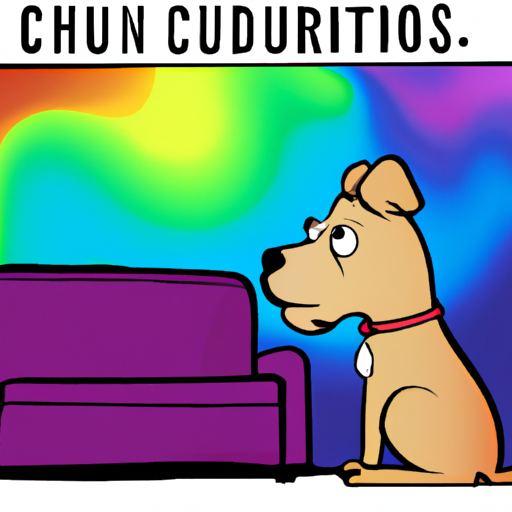You are not alone if you’ve ever wondered how your canine companion perceives the moving images on your television screen. The truth is, a lot is going on behind those devoted, curious eyes. In this article, we will explore what science says about how dogs watch and understand TV, and how this knowledge can help you, as a caregiver, better understand and cater to your dog’s needs.
How A Dog’s Vision Differs From Humans
Understanding how a dog watches TV starts with understanding how their vision differs from ours. Unlike humans, dogs have dichromatic vision, meaning they can only see two primary colors – blue and yellow. They lack the ability to see the full spectrum of colors, particularly reds and greens.
The Anatomy of a Dog’s Eye
Here’s a simple table to illustrate the key differences in our visual apparatus.
| Human Eye | Dog Eye |
|---|---|
| Trichromatic vision (sees red, blue, green) | Dichromatic vision (sees blue, yellow) |
| Less sensitive to movement | More sensitive to movement |
| 180-degree field of view | 240-degree field of view |
How Dogs Perceive the TV Screen
With their heightened sensitivity to movement and limited color vision, dogs perceive the images on a TV screen differently than humans do. Older cathode ray tube (CRT) televisions displayed fewer frames per second (FPS), which to dogs, appeared as flickering images. Modern high-definition televisions, however, display more FPS, which allow dogs to perceive smoother, more continuous action.
- CRT television: Displays around 60 FPS. Dogs perceive flickering images.
- Modern HDTV: Displays up to 120 FPS or more. Dogs perceive smoother, continuous action.
The Role of Sound
Sound plays a significant role in how dogs interact with television. Dogs have a much wider hearing range than humans, meaning they can hear sounds that we cannot. High-pitched noises, such as the whistles in a dog training program or the squeaking of a toy, can catch a dog’s attention and make them more interested in what’s happening on the screen.
How Dogs React to TV
The way a dog reacts to the television can depend on several factors, including breed, personality, and what’s being shown on the screen. Some dogs may bark or growl at animals on the screen, while others may simply ignore the TV altogether. It’s important to remember that every dog is unique, and there’s no “one-size-fits-all” way they interact with television.
Here are a few potential reactions:
- Ignoring the TV
- Barking or growling at the screen
- Showing excitement or interest
- Showing fear or anxiety
Frequently Asked Questions
Finally, let’s address some common questions you might have about dogs and television.
1. Can dogs recognize themselves on TV?
While dogs can recognize other dogs and animals on the screen, they typically don’t recognize their own reflection, let alone their image on a TV screen. This is likely due to their reliance on scent over vision for identification.
2. Can dogs watch 3D TV?
There’s no clear scientific consensus on whether dogs can perceive 3D images like humans can. However, the lack of depth perception in dogs suggests that they would not be able to fully appreciate 3D television.
3. Is it okay for my dog to watch TV?
As long as watching TV doesn’t lead to obsessive behaviors or interfere with their normal activities like eating, playing, and sleeping, it’s generally okay for your dog to watch TV. However, it’s always a good idea to consult with a vet if you have any concerns.
4. Do dogs have favorite TV shows?
There’s no concrete evidence that dogs have favorite TV shows. However, they may show more interest in programs with sounds and images of animals, particularly dogs.
Understanding how your dog sees and reacts to the TV can provide valuable insights into their world. So the next time you cuddle up on the couch with your furry friend for a TV binge session, remember that they may be having a very different viewing experience. But one thing’s for sure – they enjoy the companionship just as much as you do!



